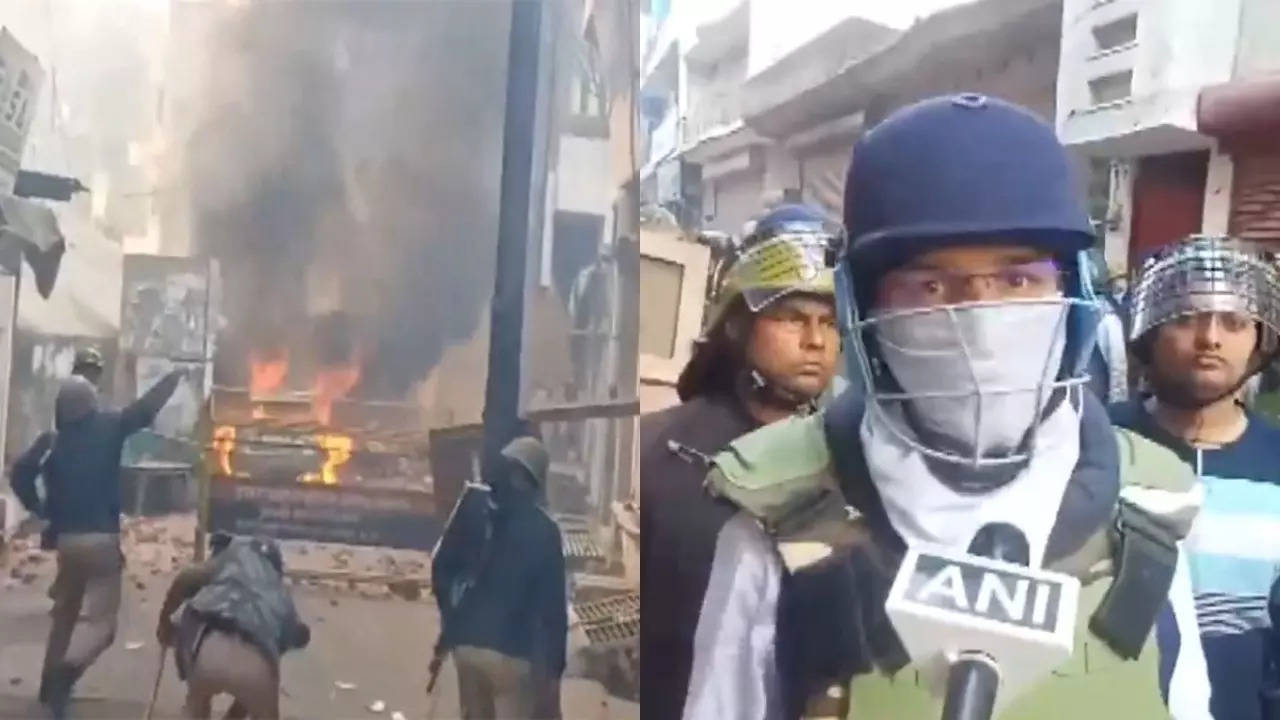 |
|
The recent events in Sambhal, Uttar Pradesh, highlight a deeply troubling escalation of tensions surrounding a court-ordered survey of a Mughal-era mosque, the Shahi Jama Masjid. The clash, which resulted in the tragic deaths of three individuals – Naeem, Bilal, and Nauman – and injuries to several police officers, underscores the volatile nature of religious and historical disputes in the region. The incident unfolded as a team, accompanied by security personnel including DM Rajendra Pansia, SP Krishna Bishnoi, and other officials, arrived at the mosque to conduct the survey. The presence of the survey team immediately ignited a furious reaction from protesters who opposed the survey, resulting in a violent confrontation. The protesters, many of whom were reportedly residents deeply connected to the mosque's historical significance, responded aggressively by pelting stones at the security forces. This act of defiance quickly spiraled into a full-blown clash, involving the use of tear gas and batons by police to disperse the increasingly unruly mob. The situation further deteriorated with reports of shots fired by protesters, striking some police officers. The details surrounding the source of the shots are currently under investigation, focusing particularly on the Deepa Sarai area. The violent confrontation showcases the severe polarization and deeply entrenched beliefs surrounding the site's history and religious significance.
The root of the conflict lies in a petition filed before a local court claiming that a Harihar temple previously stood on the site of the Shahi Jama Masjid. This petition fueled the court's order for a survey of the mosque, a decision that proved to be highly controversial and inflammatory. The timing of the survey – planned for the early morning to minimize disruption of afternoon prayers – suggests an attempt to mitigate potential conflict, but ultimately proved insufficient to prevent the outbreak of violence. The incident underscores the complex interplay between religious sensitivities, historical claims, and the potential for such disputes to erupt into widespread unrest. Ten people, including two women, were subsequently detained, highlighting the scale of the unrest and the authorities' swift response to contain the situation. The government's response also included a commitment to prosecuting those involved under the stringent National Security Act (NSA), a measure reflecting the severity of the situation and the administration's determination to prevent further escalation. The incident raises critical questions about the handling of such delicate situations involving significant religious and historical sites.
The political fallout from the Sambhal incident has been swift and sharp. Samajwadi Party chief Akhilesh Yadav accused the ruling BJP party, government, and administration of orchestrating the violence as a diversionary tactic to distract from alleged electoral malpractice. This accusation, though unsubstantiated, highlights the highly charged political climate surrounding the event and its potential to be exploited for political gain. The incident's timing, coming amidst political activity, suggests potential exploitation of the tensions to shape political narratives. The ongoing investigation will need to determine the truth behind the accusations and examine whether or not the event was truly an orchestrated act or a spontaneous eruption of violence. The deaths of three individuals and the injuries sustained by police officers serve as a grim reminder of the devastating consequences of religious disputes. Further investigation must determine the exact circumstances that led to the escalation of violence, including a comprehensive examination of the evidence surrounding the shots fired and a thorough assessment of the actions taken by both the protesters and security personnel in responding to the situation. The subsequent arrests and planned prosecution under the NSA will play a crucial role in addressing the immediate aftermath of the event. But the incident also highlights the broader need for sustained dialogue, reconciliation efforts, and a more nuanced approach to addressing conflicts involving sensitive religious and historical sites. Preventing future episodes of violence requires not just immediate law enforcement actions, but long-term efforts to defuse tensions and ensure that all parties feel their concerns are addressed.
